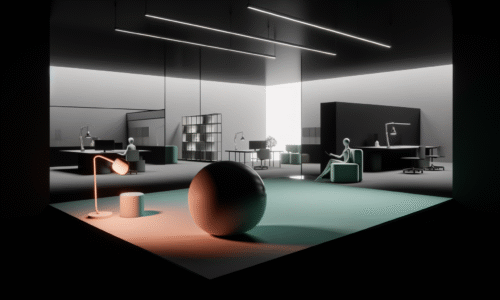Tencent Improves Testing Creative AI Models with New Benchmark: The Game-Changing Tool Every AI Developer Needs to Know About
- Tencent’s new ArtifactsBench benchmark achieves 94.4% consistency with human judgment, significantly improving from the 69.4% consistency of traditional methods.
- ArtifactsBench evaluates AI not just on code functionality, but also on user experience and aesthetic quality.
- The benchmark employs a Multimodal Large Language Model for automated evaluation, achieving human-level assessment accuracy.
- This new evaluation framework could significantly enhance AI development, especially in creative and user-facing applications.
- ArtifactsBench establishes a template for AI evaluation that may be adapted across various domains where human satisfaction is critical.
Table of Contents
- Why Tencent’s New Benchmark for Creative AI Testing is Reshaping the Industry
- The Revolutionary Framework Behind ArtifactsBench
- The Technical Innovation That Makes It All Work
- Why This Benchmark Matters for the Future of AI Development
- Practical Implications for AI Developers and Organizations
- The Broader Impact on AI Training and Evaluation
- Looking Forward: The Evolution of Creative AI Standards
Why Tencent’s New Benchmark for Creative AI Testing is Reshaping the Industry
The AI industry has been wrestling with a fundamental problem that’s been hiding in plain sight. While we’ve gotten incredibly good at training models to write functional code, we’ve been absolutely terrible at ensuring that code creates something people actually want to use. Enter ArtifactsBench, Tencent’s revolutionary approach to testing creative AI models that’s about to change how we think about AI evaluation entirely.
Think about it: when was the last time you used an AI-generated interface that felt intuitive, looked polished, and worked exactly as expected? The disconnect between AI capability and user experience has been the industry’s dirty little secret. Traditional benchmarks have been asking AI models to solve coding puzzles while completely ignoring whether the results would make a designer cry or a user flee in horror.
Tencent’s ArtifactsBench doesn’t just test whether AI can write code that compiles—it evaluates whether that code creates experiences humans actually enjoy. This isn’t just an incremental improvement; it’s a fundamental shift in how we measure AI success.
The Revolutionary Framework Behind ArtifactsBench
ArtifactsBench represents a quantum leap in AI evaluation methodology, introducing a comprehensive framework that challenges models across over 1,800 creative tasks. These aren’t your typical “hello world” programming exercises. We’re talking about developing sophisticated data visualizations, building interactive web applications, and creating engaging mini-games that users would actually want to play.
The benchmark’s three-pronged evaluation criteria sets it apart from every other testing framework in the market. Functionality remains important—your code needs to work, obviously—but ArtifactsBench also scrutinizes user experience and aesthetic quality with the same rigor traditionally reserved for technical correctness.
Here’s where it gets fascinating: ArtifactsBench employs a Multimodal Large Language Model as its judge, creating an automated evaluation system that can analyze code, understand the original task requirements, and assess screenshot evidence of the final product. This MLLM doesn’t just check if functions execute properly; it evaluates whether the interface flows logically, whether visual elements work harmoniously, and whether the overall experience meets professional standards.
The evaluation process itself reads like something from a high-tech quality assurance playbook. AI models receive a creative task, generate their code solution, and watch as their creation gets built and executed in a secure sandbox environment. Screenshots capture every animation, button interaction, and dynamic feedback element. Then comes the moment of truth: the MLLM judge examines everything through a detailed checklist covering multiple metrics across all three evaluation criteria.
What makes this approach genuinely groundbreaking is its consistency with human judgment. Previous automated benchmarks struggled to align with how human developers and designers actually assess code quality, achieving roughly 69.4% agreement with professional evaluations. ArtifactsBench demolishes this limitation, reaching 94.4% consistency with human ratings and maintaining over 90% agreement with professional developer assessments.
The Technical Innovation That Makes It All Work
The technical architecture underlying ArtifactsBench represents months of careful engineering designed to bridge the gap between automated testing and human intuition. The system’s ability to capture and analyze dynamic interactions—those subtle animations, responsive feedback loops, and interactive elements that separate professional applications from amateur attempts—required developing entirely new evaluation methodologies.
The sandbox environment where AI-generated code gets executed provides a controlled testing ground that mimics real-world deployment conditions without security risks. This environment captures not just static screenshots but dynamic behavior patterns, allowing the MLLM judge to assess how interfaces respond to user interactions and whether those responses feel natural and intuitive.
The multimodal evaluation approach represents perhaps the most sophisticated attempt yet to automate design assessment. By combining code analysis with visual evaluation and task comprehension, ArtifactsBench creates a holistic view that mirrors how human developers naturally assess creative work. The MLLM doesn’t just look at individual elements in isolation; it evaluates how everything works together to create a cohesive user experience.
Why This Benchmark Matters for the Future of AI Development
ArtifactsBench addresses a critical gap that’s been limiting AI’s practical impact in creative and user-facing applications. Traditional testing methods have produced AI models excellent at solving algorithmic challenges but surprisingly weak at creating interfaces people actually want to use. This disconnect has been particularly problematic as AI tools increasingly target non-technical users who prioritize experience over technical sophistication.
The implications extend far beyond academic research. As AI models become more capable of generating complex applications, the ability to evaluate and improve their design sensibilities becomes crucial for practical deployment. ArtifactsBench provides a roadmap for training AI models that don’t just solve problems but solve them elegantly.
Consider the current landscape of AI-generated interfaces. While impressive from a technical standpoint, many feel mechanical, unintuitive, or simply ugly. ArtifactsBench’s emphasis on aesthetic quality and user experience pushes AI development toward creating outputs that professionals would actually ship to users.
The benchmark also establishes a new standard for AI transparency and accountability. By providing detailed, metrics-based evaluations across multiple dimensions, ArtifactsBench makes it possible to identify specific areas where AI models excel or struggle. This granular feedback enables more targeted improvements and helps developers understand exactly what skills their models need to develop.
Practical Implications for AI Developers and Organizations
For organizations deploying AI in creative contexts, ArtifactsBench represents a validation tool that goes far beyond traditional testing. Instead of discovering design problems after deployment, teams can identify and address user experience issues during development. This proactive approach could significantly reduce the iteration cycles required to create AI-generated content that meets professional standards.
The benchmark’s high consistency with human judgment makes it particularly valuable for scaling creative AI applications. Organizations can’t afford to have human experts evaluate every AI output, but they also can’t afford to deploy substandard user experiences. ArtifactsBench offers a middle path: automated evaluation that reliably predicts human assessment.
Development teams working on AI-powered design tools, web development assistants, or any application where user experience matters will find ArtifactsBench’s methodology invaluable. The framework provides concrete metrics for improving AI models beyond simple functionality testing, enabling the development of truly user-centered AI applications.
The Broader Impact on AI Training and Evaluation
ArtifactsBench’s introduction signals a maturation of AI evaluation methodology. As the industry moves beyond proof-of-concept demonstrations toward practical deployment, evaluation frameworks need to evolve to measure real-world success factors. User experience and aesthetic quality aren’t nice-to-have additions; they’re fundamental requirements for AI systems that interact with humans.
The benchmark’s success in achieving human-level assessment accuracy suggests that automated evaluation of subjective qualities like design and user experience is not only possible but practical. This breakthrough could accelerate AI development by providing immediate, reliable feedback on dimensions that previously required extensive human evaluation.
For the broader AI research community, ArtifactsBench establishes new standards for comprehensive model evaluation. The framework’s three-dimensional assessment approach—functionality, user experience, and aesthetic quality—provides a template that other domains could adapt for evaluating AI systems where human perception and satisfaction matter.
Looking Forward: The Evolution of Creative AI Standards
Tencent’s ArtifactsBench represents more than just another benchmarking tool; it embodies a fundamental shift toward human-centered AI evaluation. As AI models become increasingly capable of generating complex, user-facing applications, evaluation frameworks must evolve to assess not just technical correctness but human satisfaction and engagement.
The benchmark’s emphasis on aesthetic quality and user experience reflects growing recognition that AI success requires more than algorithmic sophistication. In an era where AI tools compete directly with human-created content and interfaces, the ability to evaluate and improve design sensibilities becomes a competitive necessity.
For organizations building AI systems that interact with users—whether through interfaces, visualizations, or interactive applications—ArtifactsBench provides both a assessment tool and development target. The framework’s detailed evaluation criteria offer specific, actionable guidance for improving AI outputs beyond mere functionality.
The implications extend to AI training methodologies as well. Traditional approaches that optimize for technical metrics without considering human perception and satisfaction may need fundamental revision. ArtifactsBench’s success suggests that training AI models to excel across multiple evaluation dimensions simultaneously is not just possible but essential for practical deployment.
As AI systems become more sophisticated and ubiquitous, evaluation frameworks like ArtifactsBench will play crucial roles in ensuring that technological capability translates into genuine human benefit. The benchmark’s breakthrough in automated aesthetic and user experience evaluation could accelerate development cycles while maintaining quality standards that users actually appreciate.


